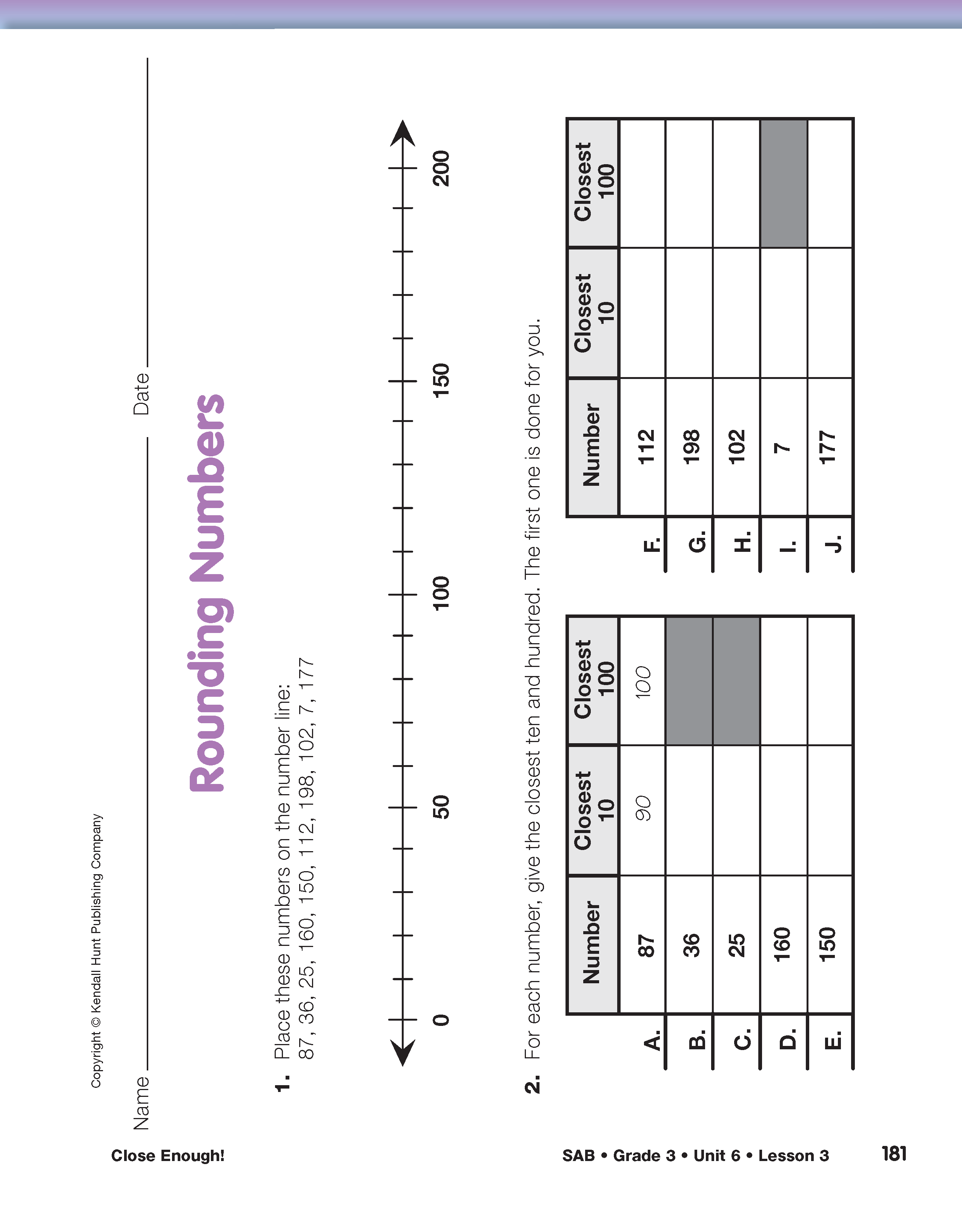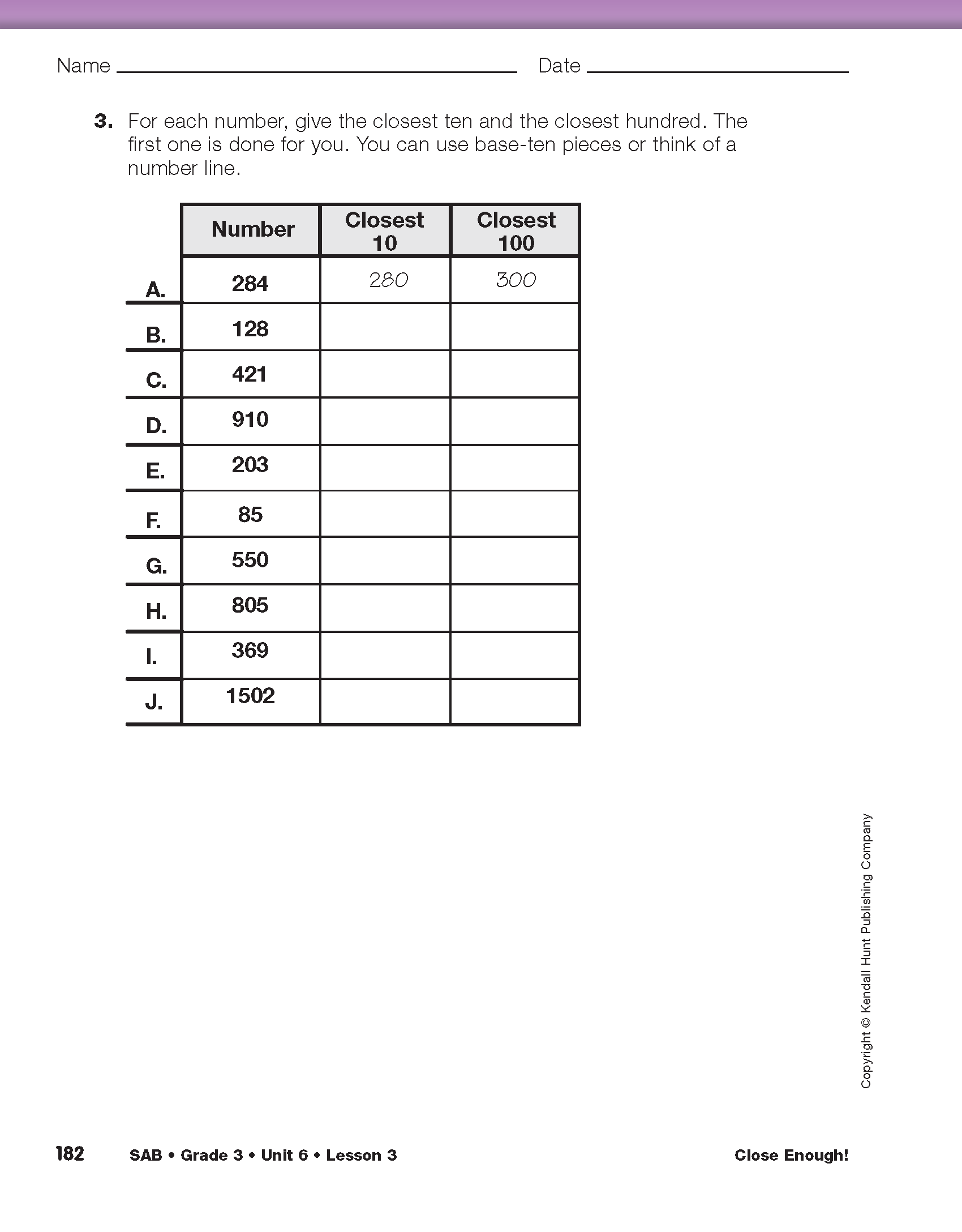Close Enough!
Est. Class Sessions: 3Developing the Lesson
Part 1. Rounding Numbers Using Benchmarks
Compare Using Benchmarks and Base-Ten Pieces. To begin this activity, students will work with a partner. The pair will need the two Hundreds Template pages from the Student Activity Book. Ask student pairs to tape the two copies of the Hundreds Template page together as shown in Figure 1. The other student will save their template pages to use later, as needed.
Ask students to cover each of the four grids with a flat.
Ask:
Have students clear the flats from their pages. Ask them to work with their partner to place skinnies on each row going down and to count by tens until they reach 400. Students should record the numbers they say at the end of each row as shown in Figure 1. If students run out of skinnies before they reach 400, they can replace the skinnies on a filled grid with a flat and then continue counting by ten. Once students have completed this activity, ask them to clear their grids.
Ask students to place 1 flat, 2 skinnies, and 3 bits on the template, filling it in from the top and from left to right. See Figure 1.
Ask:
Ask students to use base-ten pieces to cover 167 on the template.
Ask:
Ask students to use base-ten pieces to cover 201 on the template.
Ask:
Continue these types of problems choosing a variety of numbers such as 329, 303, 199, 216, 98, or 300. Make sure students focus on both hundreds and tens and the issue of which hundred or ten is closer.
Round Using Base-Ten Pieces. Explain that rounding is one estimation strategy that can be used when an exact number is not needed. When you round up you round to the closest ten or hundred benchmark that is larger than the given number and when you round down you round to the closest ten or hundred benchmark that is smaller than the given number. For now, numbers that end in 5 or 50 can be rounded either up or down since they are exactly midway between any given benchmark. The Content Note provides more information about rounding numbers that end in 5 or 50.
Provide additional practice using base-ten pieces to round to the nearest ten or hundred using numbers larger than 400 such as 456, 478, 529, or 872.
For each number, ask:
Round with Number Lines. After students have practiced finding the nearest ten or hundred for a given number using the Hundreds Template page, ask them to find 23 on their desk number line.
Ask:
Now ask students to find 97 on their desk number line.
Ask:
Point to 123 on the class number line.
Ask:
Direct students to the first Rounding Numbers page in the Student Activity Book, and show a display of the page. Ask students to locate 87 on their desk number lines, then work with a partner to decide about where 87 is located on the number line on the Rounding Numbers page. Ask a student to place a point on the number line in Question 1 and label it with 87.
Ask:
Ask students to look at the table in Question 2. Question 2A shows how to fill in the table by rounding 87 to the nearest ten and hundred. Ask students to place 36 and 25 on the number line and complete the table for Questions 2B and 2C.
For Question 2C, ask:
Encourage discussion about this point. Since 25 is exactly halfway between 20 and 30, there are two “closest tens.” Students can write either 20 or 30 in the table for the closest ten. See the Content Note.
Ask students to complete the Rounding Numbers pages in class. As students work ask questions similar to those in the discussion prompts to elicit student thinking and to check their understanding of rounding to the nearest ten or hundred.
Assign the Homework section of the Rounding Numbers pages in the Student Activity Book for homework. This section is similar to the pages that students just completed, except that they work with numbers up to 400.
















